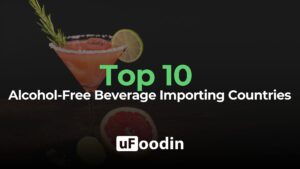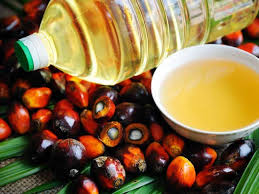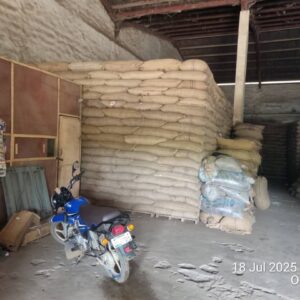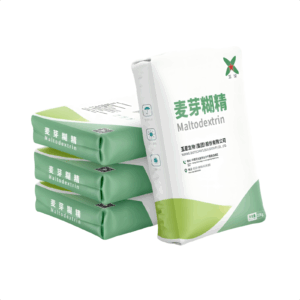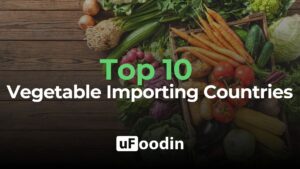
Top 10 Tomato Paste Producing Countries
Tomato paste, an essential ingredient in global cuisines, is valued for its rich flavor, long shelf life, and versatility. It plays a pivotal role in the food industry, contributing to the preparation of sauces, soups, ready-to-eat meals, and convenience foods. The global tomato paste market was valued at approximately $5.6 billion in 2023, with projections to grow at a CAGR of 4.2%, reaching over $7.8 billion by 2030.
China, Italy, and the United States dominate global production, contributing to over 65% of the market share, while emerging producers like Iran, Turkey, and Egypt are gaining momentum due to growing demand in their respective regions. Tomato paste exports are a significant economic driver for many countries, with the top exporters benefiting from both strong domestic cultivation and efficient processing industries.
The demand for tomato paste is fueled by urbanization, rising disposable incomes, and an increasing preference for convenient and packaged foods. Furthermore, the shift towards healthier diets has positioned tomato paste as a vital component in the food processing industry, particularly in organic and preservative-free product lines.
This article explores the Top 10 Tomato Paste Producing Countries, their contributions to the global market, and the challenges and trends shaping the future of this versatile product.

- China
- Annual Production: Over 4.5 million metric tons
- Why It Stands Out: China is the largest producer and exporter of tomato paste, supplying more than 35% of global exports. It benefits from low production costs and large-scale processing facilities.
- Key Innovations: Advanced supply chain management and high-capacity production plants.
- Italy
- Annual Production: Approximately 2.4 million metric tons
- Why It Stands Out: Italy is renowned for its premium-quality tomato paste, often used in authentic Mediterranean cuisines. The country prioritizes organic and PDO (Protected Designation of Origin) certified products.
- Key Innovations: Sustainable farming practices and state-of-the-art milling technology.
- United States
- Annual Production: Around 1.6 million metric tons
- Why It Stands Out: California accounts for nearly 95% of the U.S. tomato paste production, supported by high-tech irrigation systems and mechanized harvesting.
- Key Innovations: Development of water-saving farming techniques and fortified tomato products.
- Turkey
- Annual Production: Over 1.2 million metric tons
- Why It Stands Out: Turkey is a major supplier to Europe and the Middle East, producing a diverse range of tomato paste products.
- Key Innovations: Integration of solar-powered processing facilities and high-quality hybrid tomato seeds.
- Spain
- Annual Production: Approximately 850,000 metric tons
- Why It Stands Out: Spain specializes in high-quality tomato paste for Mediterranean cuisines and is a significant exporter to European markets.
- Key Innovations: Focus on precision agriculture and recyclable packaging.
- Iran
- Annual Production: Around 750,000 metric tons
- Why It Stands Out: Iran’s tomato paste is a key export product, particularly for markets in Asia and Europe, despite economic sanctions.
- Key Innovations: Adoption of heat-tolerant tomato varieties and energy-efficient processing.
- Brazil
- Annual Production: Over 650,000 metric tons
- Why It Stands Out: As South America’s leading producer, Brazil’s tomato paste industry supports both domestic consumption and exports.
- Key Innovations: Implementation of renewable energy and advanced cultivation methods.
- Egypt
- Annual Production: Around 550,000 metric tons
- Why It Stands Out: Egypt’s tomato paste production caters to African and Middle Eastern markets, leveraging cost-effective labor and government-supported agriculture programs.
- Key Innovations: Use of reclaimed water for irrigation and partnerships with local cooperatives.
- Uzbekistan
- Annual Production: Approximately 450,000 metric tons
- Why It Stands Out: Uzbekistan has emerged as a competitive player in the tomato paste market, focusing on cost-effective production and exports to Europe and Asia.
- Key Innovations: Investments in cold storage and sustainable farming technologies.
- India
- Annual Production: Over 400,000 metric tons
- Why It Stands Out: India’s growing domestic demand and exports to South Asia have fueled its tomato paste production industry.
- Key Innovations: Support for small-scale processors and development of disease-resistant tomato strains.
Expanded Major Trends in the Tomato Paste Industry
- Growth in Ready-to-Eat and Packaged Foods
The increasing reliance on convenience foods is driving the demand for tomato paste. It is a crucial ingredient in sauces, soups, and pre-packaged meals, particularly in urban areas where fast meal preparation is prioritized.
- Organic and Premium Products
There is a rising demand for organic and preservative-free tomato paste, especially in Europe and North America. Premium products emphasizing sustainable practices and superior taste are gaining market share.
- Technological Advancements in Processing
Advanced processing techniques, such as vacuum evaporation and continuous sterilization, are improving product consistency, shelf life, and flavor retention, making tomato paste more appealing to health-conscious consumers.
- Expansion of Export Markets
Emerging markets in Asia, Africa, and Latin America are experiencing an increase in tomato paste imports due to growing population and dietary changes. These regions are becoming key drivers for global demand.
- Focus on Sustainability
Sustainability initiatives, such as water-efficient irrigation systems, solar-powered processing plants, and eco-friendly packaging, are shaping the industry as producers respond to environmental concerns.

Expanded Main Challenges in the Tomato Paste Industry
- Climate Change Impacts
Tomato crops are highly sensitive to temperature and water availability. Erratic weather patterns, including droughts and floods, are reducing yields in key producing regions. Adaptive farming techniques are becoming essential to mitigate these effects.
- Price Volatility
Fluctuations in input costs, such as fertilizers, energy, and transportation, contribute to price volatility. Producers and consumers alike are affected, particularly in developing markets.
- Counterfeit Products
Adulterated and counterfeit tomato paste products are a growing concern in global markets. Ensuring quality and authenticity through traceability systems is vital to maintaining consumer trust.
- Labor Shortages
Mechanization is not feasible for all producers, particularly in regions with steep terrains or traditional farming practices. Labor shortages and rising wages add pressure to production costs.
- Export Barriers
Geopolitical tensions, trade restrictions, and tariffs can disrupt global supply chains. Diversifying export markets and ensuring compliance with international standards are critical for producers.
- Balancing Sustainability with Cost Efficiency
While sustainability practices are increasingly important, their associated costs can be a burden for smaller producers competing in price-sensitive markets.
The Top 10 Tomato Paste Producing Countries highlight the global importance of this versatile product. From China’s mass production capabilities to Italy’s focus on premium quality, these nations demonstrate a remarkable blend of tradition and innovation in meeting global demand.
Platforms like uFoodin serve as valuable resources for producers, offering opportunities to connect with international buyers, streamline supply chains, and explore collaborations. For emerging producers, uFoodin provides a platform to access global markets, showcase unique products, and promote sustainability practices. Established producers can leverage uFoodin to enhance their export strategies and strengthen their market presence.
As the tomato paste industry continues to grow, addressing challenges such as climate change, price volatility, and counterfeit products will be essential. By embracing innovation, focusing on sustainability, and adapting to consumer preferences, the industry is well-positioned for a resilient and prosperous future.
uFoodin Editorial Team
Bibliography
- Statista: Tomato Paste Market Trends and Insights
- FAO (Food and Agriculture Organization): Global Tomato Production Data
- International Trade Centre (ITC): Export Trends in Processed Foods
- Company Reports: Leading Producers in the Tomato Paste Industry

